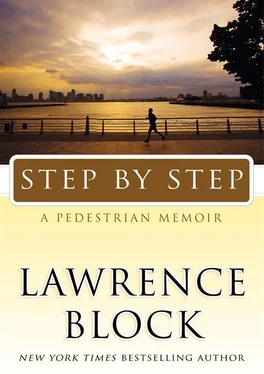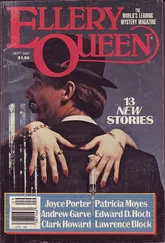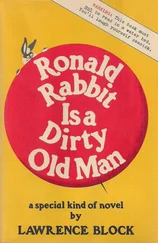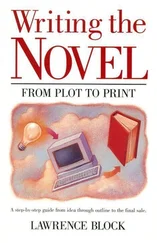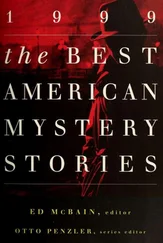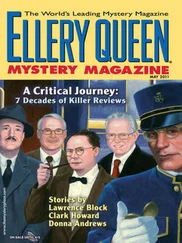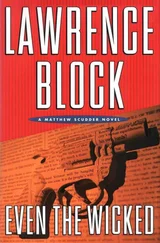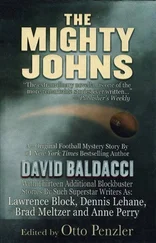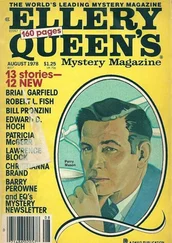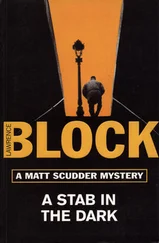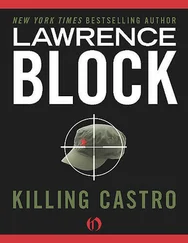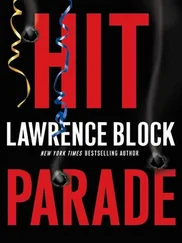Lawrence Block - Step by Step
Здесь есть возможность читать онлайн «Lawrence Block - Step by Step» весь текст электронной книги совершенно бесплатно (целиком полную версию без сокращений). В некоторых случаях можно слушать аудио, скачать через торрент в формате fb2 и присутствует краткое содержание. Год выпуска: 2009, ISBN: 2009, Издательство: William Morrow, Жанр: Биографии и Мемуары, Юмористические книги, на английском языке. Описание произведения, (предисловие) а так же отзывы посетителей доступны на портале библиотеки ЛибКат.
- Название:Step by Step
- Автор:
- Издательство:William Morrow
- Жанр:
- Год:2009
- ISBN:978-0-06-172181-6
- Рейтинг книги:3 / 5. Голосов: 1
-
Избранное:Добавить в избранное
- Отзывы:
-
Ваша оценка:
- 60
- 1
- 2
- 3
- 4
- 5
Step by Step: краткое содержание, описание и аннотация
Предлагаем к чтению аннотацию, описание, краткое содержание или предисловие (зависит от того, что написал сам автор книги «Step by Step»). Если вы не нашли необходимую информацию о книге — напишите в комментариях, мы постараемся отыскать её.
bestselling author comes a touching, insightful, and humorous memoir of an unlikely racewalker and world traveler.
Step by Step — читать онлайн бесплатно полную книгу (весь текст) целиком
Ниже представлен текст книги, разбитый по страницам. Система сохранения места последней прочитанной страницы, позволяет с удобством читать онлайн бесплатно книгу «Step by Step», без необходимости каждый раз заново искать на чём Вы остановились. Поставьте закладку, и сможете в любой момент перейти на страницу, на которой закончили чтение.
Интервал:
Закладка:
The real trick, it seemed to me, lay in finding Orchard Park. I borrowed my mother’s car and drove there, paid an entry fee of a couple of dollars, pinned a number on my shirt, and began worrying about my performance. I had two goals: to finish the race, and to get across the finish line ahead of at least one other person.
In due course they signaled the start and I took off. I’d read enough to know that neophytes all made the same mistake. They invariably started too fast, and did so without realizing it; the excitement of the race caught them up, and what felt to them like their usual easy pace was actually a good deal speedier. They kept this up as long as they could, and then they burned out, and wound up in trouble. But I knew this, see, and so I knew to guard against it.
And did it anyway.
The race was an odd distance, 6.55 miles. The course was an asphalt loop 1.31 miles long, and we were required to go around it five times. I ran along, establishing what felt like a brisk pace but certainly not pushing it, and by the time I was a little ways into the third lap my heart was pounding and I was gasping for breath.
I felt like someone who’d just failed a stress test. I also felt like a low-grade moron, because I realized instantly what had happened, and that it had all been my fault. I’d gone out too fast, and the result was just what I’d so often read in the books and magazines. I’d outrun my capacity, and I couldn’t keep going. I couldn’t continue at that pace, nor could I gear down and jog along more slowly. I could no longer do any running at all.
So I did what I’d done during those first circuits of Washington Square. I walked, feeling like an abject failure. It was a race for runners, for God’s sake, and that’s what I was, a runner, and what was I doing? I was walking.
But at least it would move me along toward the end of the race. And after I’d walked for a while I was able to run again. I didn’t run well, I’d done too good a job of exhausting myself, but I was running now instead of walking, and that seemed to matter to me. I kept going until I’d finished the fifth lap and completed the race, and then I watched as, remarkably, quite a few people came in behind me.
One of their number, not last but not far from it, was a fellow who looked to be about twenty-five or thirty, and who’d walked the entire race. I thought that was pretty curious — a walker in a race full of runners? — but at least I’d beaten him. As much as I’d sabotaged myself, as poorly as I’d run the race, at least I’d come in ahead of the walker.
How ignominious if I hadn’t!
My time in the Orchard Park 6.55-mile race was 59:33.
And how do I know that? Well, I wrote it down. In 1979 I bought a book called Run Farther, Run Faster by Joe Henderson. Sometime in 1980, when I started racing more frequently, I began logging the results of each race on the blank pages at the end of the book. I entered my eight 1980 races as they occurred, and then I found a space on another page and noted the four races I’d done the previous year, along with my official time in each. (For one, a fiercely hilly 10K in Upper Manhattan, I knew the minutes but not the seconds; my notation reads Heights-Inwood 10K—53:?? )
I went on entering each race as I ran it, through late October of 1982. When I remembered, I included the date. Almost invariably, I noted my race number as well, though why I thought that information worth preserving is quite beyond me. Keeping track of my races was evidently important to me, and when I knocked around the country in the summer of ’81, toting a backpack that was as light as I could make it, I made room in that backpack for Joe Henderson’s book. I ran eight races in six states, and logged them all.
The last race in the book was an 8K in Central Park on Halloween in 1982. I was living in Brooklyn at the time, on Manhattan Avenue in Greenpoint, and I went home and entered the race in my book, noting my time and bib number. And then I put the book away and didn’t enter a race again until January 9, 2005.
It was a five-mile race, held on the same course as that Halloween race, and when I got back to my Greenwich Village apartment one of the first things I did was go to the bookshelf and take down the Joe Henderson book. It was the only running book I still owned, and I’d kept it only because it had my log in the back. I opened it up, found the final 1982 entry, and drew a line under it. Under the line I wrote “ 2005 ” and under that I entered all the data from the new race — the date, the name of the race, my race number, and my official time.
My second race in 1979 was the New Harlem 10K. It was sponsored by New York Road Runners, and held on the streets of Harlem, streets I ordinarily had no reason to visit. Someone — I believe it was Jimmy Breslin — wrote a day or two later about the bemused response of the neighborhood’s residents to the presence that Sunday morning of “a thousand skinny white guys running around in their underwear.”
I’d learned from Orchard Park, and when the race started I set out at a sane pace and had no trouble maintaining it all the way to the finish. My time was 51:49, and the number I wore was #2156, but what was really great was that I got to take something home besides my time and race bib. I got a shirt.
Well, so did everyone else who entered the race. This particular shirt was a cotton singlet, with the name of the race on its front. The shirt was white, the lettering red and blue. I wore it with pride.
I ran two more races that year, the Heights-Inwood 10K (with a steep and nasty downhill stretch in Fort Tryon Park; the uphills tire you, but the downhills wreck your knees) and a 7.6-mile race in Bennington, Vermont, about which I remember nothing beyond the fact that I combined it with a week’s vacation in that state. (And my time, of course: 1:08:18.) They didn’t give out shirts in Bennington, but I got a T-shirt at the Heights-Inwood race, and at most of the eight races I ran the following year.
All eight were in the late summer and fall. It must have been around that time that I joined New York Road Runners. Members paid a dollar or two less to enter races, and I’d reached a point where I was likely to save more than the cost of my membership. There were other activities offered to members as well, group training runs and various sorts of instruction, but they were all held on the east side of Central Park, at Ninetieth Street and Fifth Avenue, and I was then living on Greenwich Street in the Village, and getting from one point to the other was, well, not exactly a walk in the park. (Most of the NYRR races started there as well, but that struck me as worth it.)
The last race of 1980 was my longest to date, ten hilly miles in Central Park on December 14. And it was around that time that I started dreaming marathon dreams.
They’d held the New York Marathon in November, but of course I hadn’t even considered participating. I knew I wouldn’t be able to go the distance, but I also knew it was something I wanted to do eventually. And around that time I read in my running magazines that the first London Marathon would be held the end of March. I’d been to London a year or so earlier, it was a city I’d visited a few times over the years, and I thought it would be exciting to go back again, this time to participate in the first running of the marathon.
According to what I’d read, I had enough time to train for the distance. All I wanted was to be able to finish, and that seemed a reasonable goal.
And, happily enough, the NYRR race schedule would assist me toward that end. Along with a few shorter races, the club’s winter schedule included 15K and 20K races in consecutive weeks in January, and 25K and 20-mile races in February. That 20-mile race was held five weeks before the marathon, and would be a mere 6.2 miles less than I’d have to go in London. That made it a perfect steppingstone, and I figured I could get there, step by step, so I mailed in my registration for the race, booked my flight to London, and got down to the serious business of training.
Читать дальшеИнтервал:
Закладка:
Похожие книги на «Step by Step»
Представляем Вашему вниманию похожие книги на «Step by Step» списком для выбора. Мы отобрали схожую по названию и смыслу литературу в надежде предоставить читателям больше вариантов отыскать новые, интересные, ещё непрочитанные произведения.
Обсуждение, отзывы о книге «Step by Step» и просто собственные мнения читателей. Оставьте ваши комментарии, напишите, что Вы думаете о произведении, его смысле или главных героях. Укажите что конкретно понравилось, а что нет, и почему Вы так считаете.
